How to Photograph a Total Lunar Eclipse (A Moon Photo Guide)
Total Lunar Eclipse of 2008
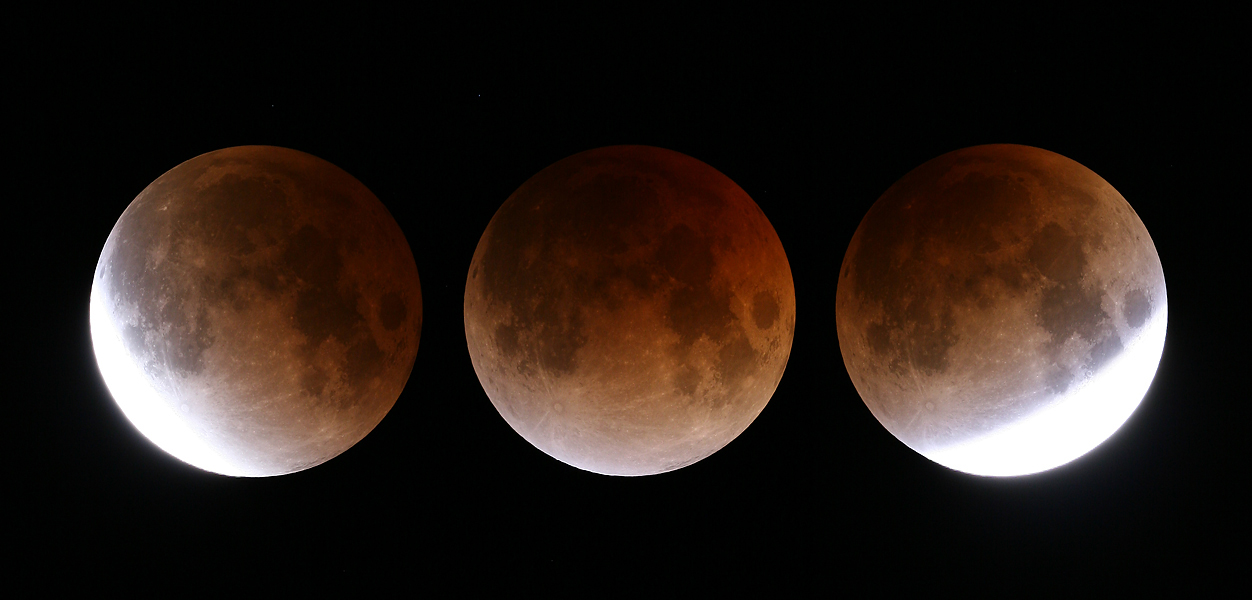
Photographers Imelda Joson and Edwin Aguirre
Total Lunar Eclipse of 2003
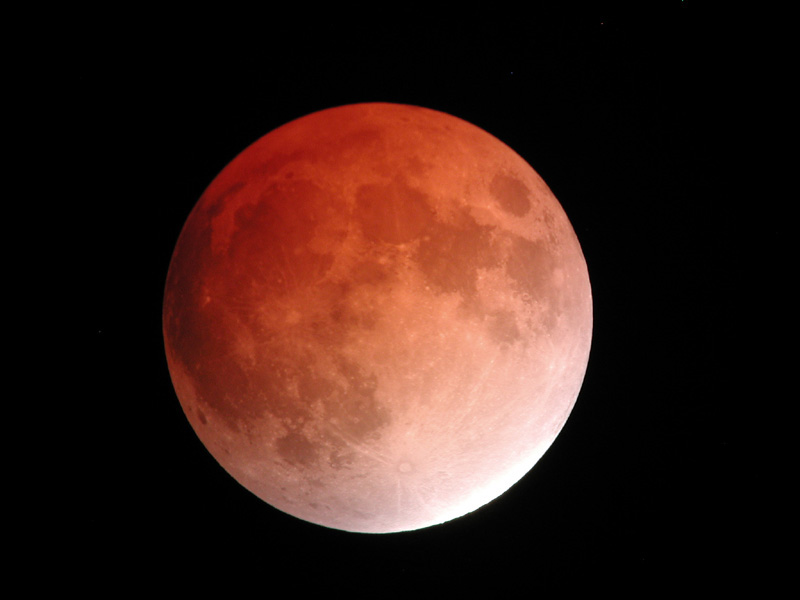
The moon's vivid, reddish-orange color during totality is caused by sunlight that is refracted (bent) by our atmosphere around the edge of Earth and cast into the planet's shadow. This view of the Nov. 8, 2003, total lunar eclipse was captured by Imelda Joson and Edwin Aguirre with an 8-inch f/10 Meade Schmidt-Cassegrain telescope and a Nikon Coolpix 990 digital point-and-shoot camera. Supermoon Lunar Eclipse: See our complete Blood Moon coverage.
Afocal Projection
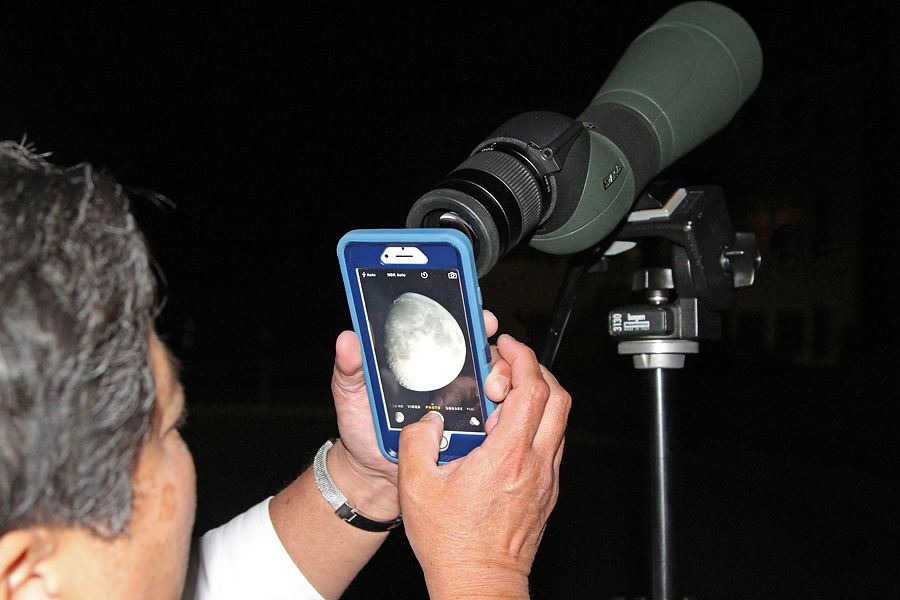
Imelda Joson demonstrates how the afocal projection technique is done using an iPhone 6 and the Swarovski spotting scope that she uses for bird-watching. This is the exact setup used to capture the accompanying photo of the first-quarter moon. Supermoon Lunar Eclipse: See our complete Blood Moon coverage.
Total Lunar Eclipse of 2003 2
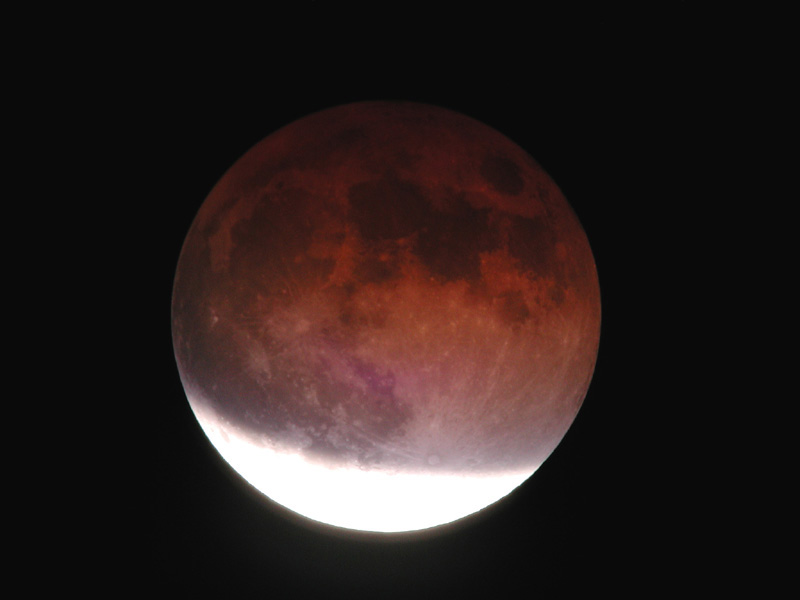
Even when the moon was coming out of eclipse on Nov. 8, 2003, the portion that remained immersed in the umbra was still glowing deep red as seen in this exposure. Supermoon Lunar Eclipse: See our complete Blood Moon coverage.
Total Lunar Eclipse of 2004
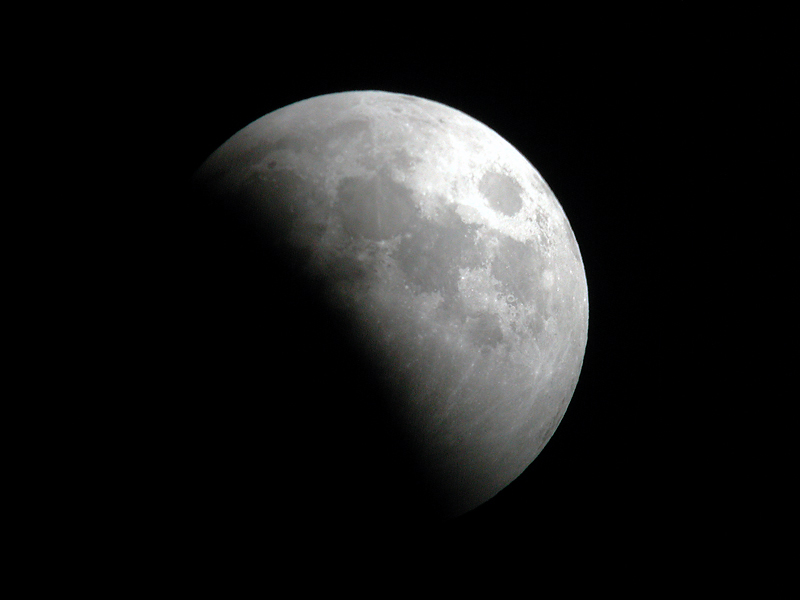
This is how the partial phase of the eclipse appears as the umbra glides across the lunar disk. Imelda Joson and Edwin Aguirre obtained this snapshot of the umbra covering about half of the moon's surface on Oct. 28, 2004, using an 8-inch f/10 Meade Schmidt-Cassegrain telescope and a Nikon Coolpix 990 digital point-and-shoot camera. The exposure time was 1/500 second at ISO 400. Supermoon Lunar Eclipse: See our complete Blood Moon coverage.
Total Lunar Eclipse of 2004 2
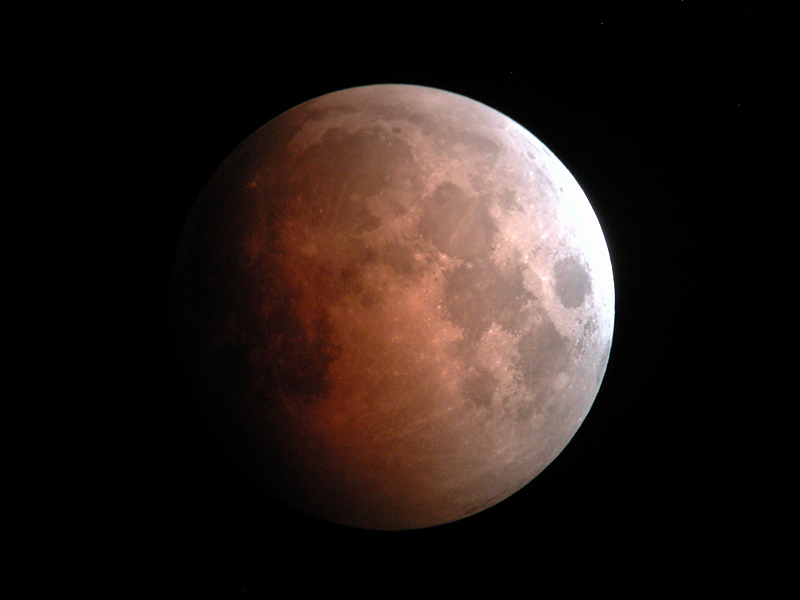
Here’s another view of the Oct. 28, 2004, eclipse as totality was about to begin. Imelda Joson and Edwin Aguirre used the same setup as in the previous photo, but they increased the exposure time to 1 second to reveal the moon's deep ruddy color. Supermoon Lunar Eclipse: See our complete Blood Moon coverage.
Total Lunar Eclipse of 2004 3
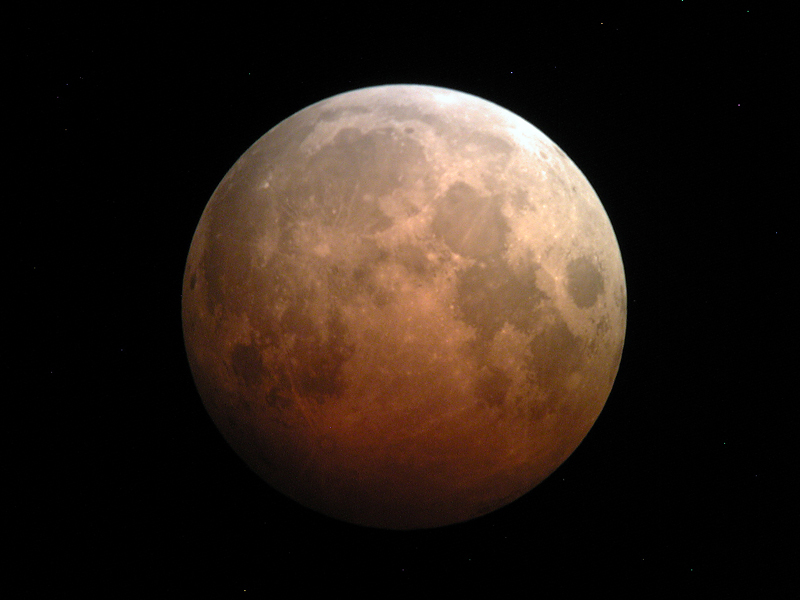
The moon at mid-eclipse on Oct. 28, 2004. The exposure time was 4 seconds at ISO 400. Supermoon Lunar Eclipse: See our complete Blood Moon coverage.
Get the Space.com Newsletter
Breaking space news, the latest updates on rocket launches, skywatching events and more!
Total Lunar Eclipse of 2004 4
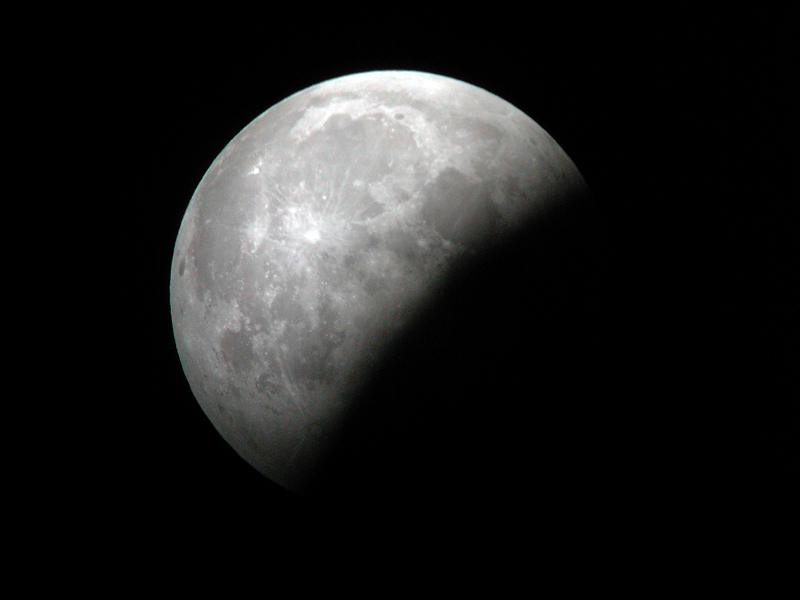
The moon is seen here about halfway into exiting Earth's umbral shadow on Oct. 28, 2004. Due to the moon's increasing brightness, the exposure time was cut down to 1/500 second to avoid overexposing the moon. Supermoon Lunar Eclipse: See our complete Blood Moon coverage.
First-Quarter Moon 2015

Today's new generation of smartphone cameras are capable of taking stunning photos of the moon. Imelda Joson and Edwin Aguirre captured this view of the first-quarter moon on July 24 of this year using an iPhone 6 (handheld) to shoot through the eyepiece of a tripod-mounted Swarovski 80-mm spotting scope at 60× magnification. The iPhone 6's iSight camera features a five-element, f/2.2 lens and an 8-megapixel sensor (with 1.5-micron picture elements). Supermoon Lunar Eclipse: See our complete Blood Moon coverage.
Waxing Gibbous Moon 2015
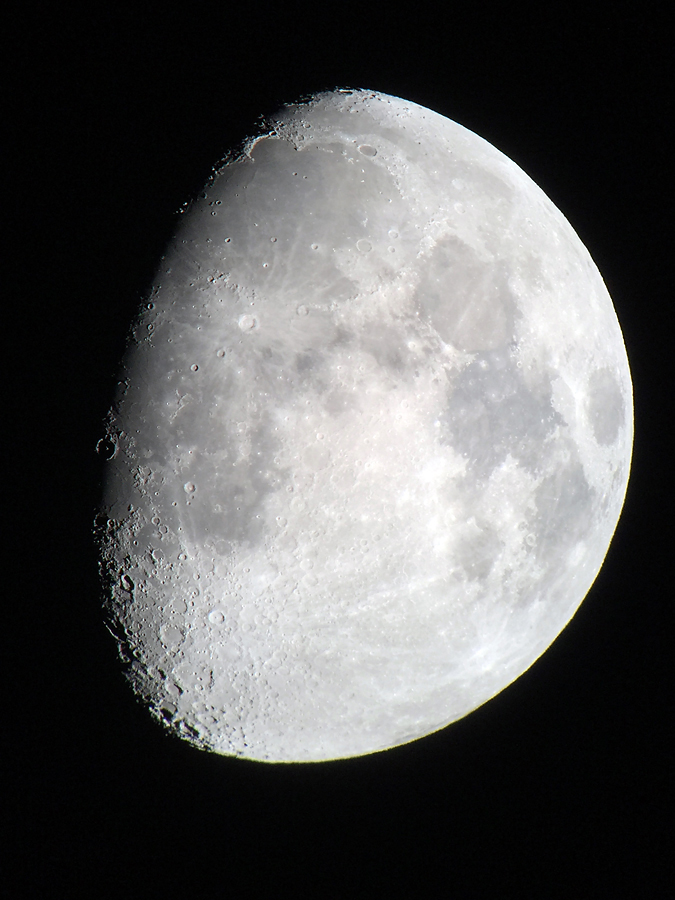
This portrait of the waxing gibbous moon on Wednesday (Sept. 23) — only four days before the total eclipse — was snapped by Imelda Joson and Edwin Aguirre from their driveway. They used the same iPhone 6 and Swarovski spotting scope combination as in the previous lunar image. Supermoon Lunar Eclipse: See our complete Blood Moon coverage.
Airplane Trail 1
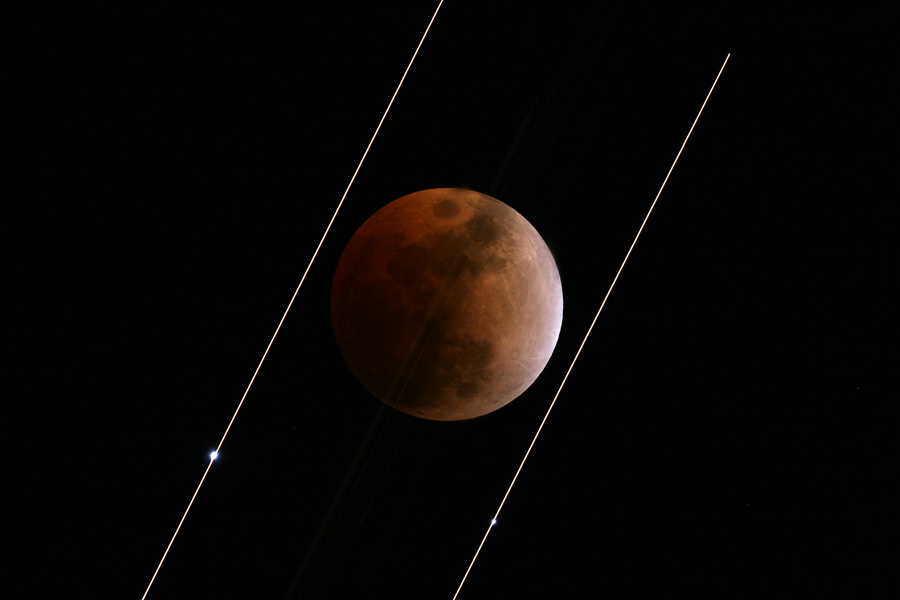
If you live near a major airport, commercial jets passing overhead can sometimes lead to unintended photo bloopers. Imelda Joson and Edwin Aguirre were busy photographing the Feb. 20, 2008, total lunar eclipse when a plane approaching Boston's Logan Airport passed right in front of the moon, its navigation lights leaving bright trails during the 1-second-long exposure. Supermoon Lunar Eclipse: See our complete Blood Moon coverage.
Join our Space Forums to keep talking space on the latest missions, night sky and more! And if you have a news tip, correction or comment, let us know at: community@space.com.
Imelda B. Joson is a veteran astrophotographer, as well as an eclipse chaser and world traveler. With her husband, Edwin Aguirre, she has organized, led and/or participated in 11 solar eclipse expeditions in North America, Asia and Africa. The pair also conceptualized and created National Astronomy Week, an event that celebrates and publicizes astronomy in the Philippines.









